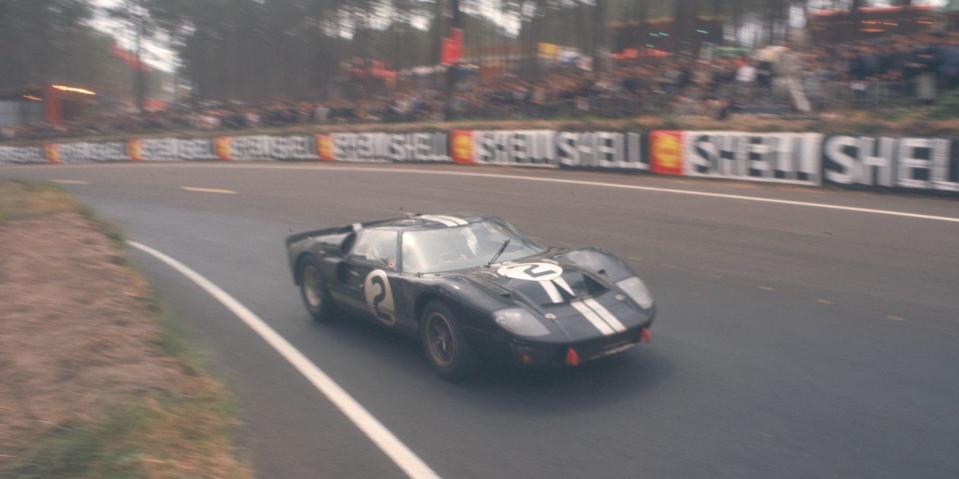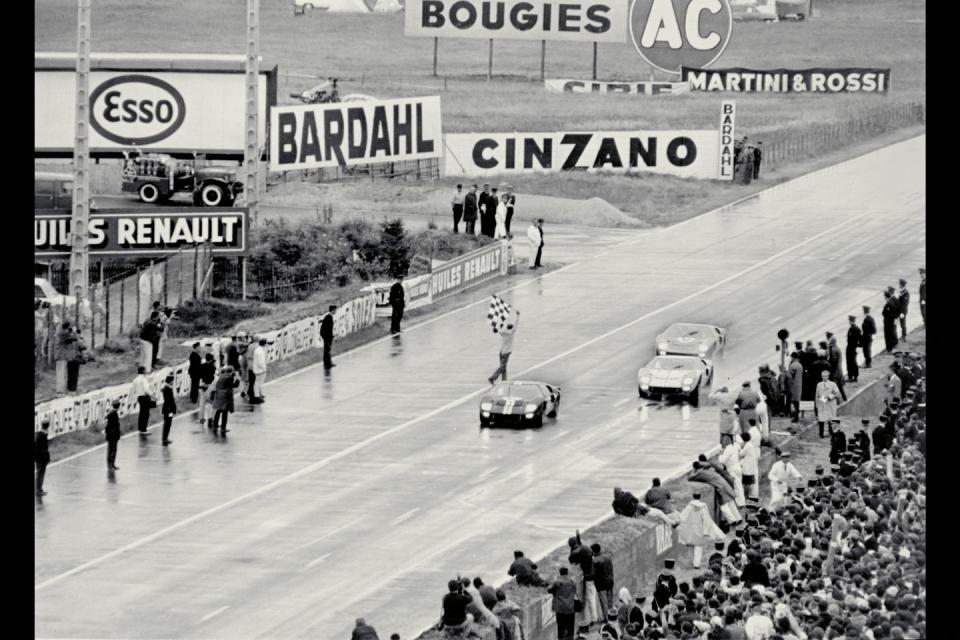Ford v Ferrari: The Untold Story that Saved Ford's Race

After trying and failing to win the 24 Hours of Le Mans with its GT40 race cars in 1964 and 1965, Ford decided it needed a more powerful weapon for the 1966 event: enter the famous 427-cubic-inch big-block race engine, which replaced the highly stressed 289. The company spent months developing the 427, but all would have been lost if not for the eleventh-hour save of a savvy engineer named Mose Nowland.
Nowland had just finished working on Ford's Indy-car engine. He and his team were assigned to help re-engineer the company's winning 427 NASCAR V-8 for use in the GT40. That meant making it reliable enough to survive 24 grueling hours instead of the two or three it normally endured in a stock-car event. They detuned it from about 500 hp to 485 and then tested its reliability by bolting it to a GT40 transaxle and running the assembled powertrain around the clock on what might have been the world's first chassis dynamometer. Housed in the now-legendary dyno cell 17D at Ford's Dearborn, Michigan, engineering center, the dynamometer was programmed to simulate laps at Le Mans in order to stress the drivetrain exactly as it would be in competition.

As the French classic neared, several race engines were assembled in Dearborn and shipped to the two teams that would be running the event: Shelby American in Los Angeles and Holman-Moody in North Carolina.
Nowland, now 85, told what happened next at a recent event at Ford Motor's corporate archives, where the company shared historic documents related to its win in the 1966 race. "We were using a sealer between the engine block and heads, and we discovered that it would blow out and cause an oil leak. But we found a very special type of twine that we embedded in the sealer that acted like a dam and prevented the leak."
A couple of days before the race cars were to be shipped to France, Nowland said, "The teams installed the race engines and ran them a bit to shake them down, and they were leaking oil. Turns out, the engine builders had run out of the special twine and substituted normal twine." It obviously wasn't working.
"I was told to get on a plane and go fix the engines. So I landed in North Carolina and I thought, 'I bet that if I can find the right size fishing line it will work.' I figured out exactly the diameter I needed and I went straight to a bait-and-tackle shop and started measuring their fishing lines with a micrometer." You have to wonder what the shop owner must have been thinking.
"We rebuilt the Holman-Moody engine with the fishing line and got it back into the car by morning and tested it—and it worked! So, I jumped on the plane and flew to Los Angeles to Shelby American and rebuilt their engine overnight the same way. No sleep for 48 hours.
"And then I flew straight back to Detroit. And when I got home my wife handed me my suitcase, which she had packed, and told me, 'have a nice trip.' And I flew directly to France for the race."

Days later, Nowland got to see one of the 427s he had repaired power the Shelby American GT40 wearing number two (pictured above) to victory at the 1966 24 Hours of Le Mans. Its sister ships finished second and third in a staged photo finish.
And so it was that a clever engineer used a few cents worth of common fishing line to hook the biggest fish in Ford Motor Company's racing history. So big, in fact, they've made a movie about it.
Ford v Ferrari opens in theaters nationwide on November 15th.
You Might Also Like
